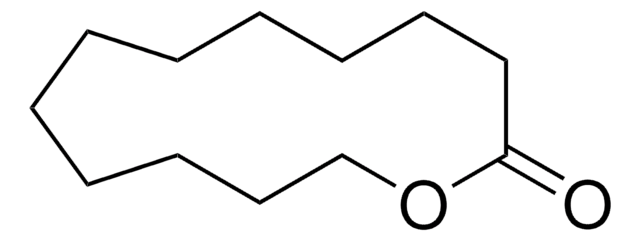All Photos(1)
About This Item
Empirical Formula (Hill Notation):
AgNO3
CAS Number:
Molecular Weight:
169.87
MDL number:
UNSPSC Code:
12352302
PubChem Substance ID:
Recommended Products
form
aqueous solution
availability
available only in Japan
concentration
0.1 M
1/10 N
storage temp.
15-25°C
SMILES string
[Ag]
InChI
1S/Ag.NO3/c;2-1(3)4/q+1;-1
InChI key
SQGYOTSLMSWVJD-UHFFFAOYSA-N
Looking for similar products? Visit Product Comparison Guide
Application
- Photochemical Synthesis of Silver Nanoparticles: Silver nitrate is pivotal in the photochemical synthesis of silver nanoparticles using UV pulsed laser irradiations. The presence of surfactant additives influences the morphology and stability of the synthesized nanoparticles, which have applications in catalysis, sensing, and biomedical fields. This method provides a controlled approach to nanoparticle synthesis, essential for advanced material science and nanotechnology research (Qazi, Journal of New Materials for Electrochemical Systems, 2021).
Signal Word
Danger
Hazard Statements
Precautionary Statements
Hazard Classifications
Aquatic Acute 1 - Aquatic Chronic 1 - Eye Irrit. 2 - Met. Corr. 1 - Repr. 1B - Skin Irrit. 2
Storage Class Code
6.1D - Non-combustible acute toxic Cat.3 / toxic hazardous materials or hazardous materials causing chronic effects
WGK
WGK 3
Flash Point(F)
Not applicable
Flash Point(C)
Not applicable
Choose from one of the most recent versions:
Already Own This Product?
Find documentation for the products that you have recently purchased in the Document Library.
Liming Wang et al.
ACS nano, 9(6), 6532-6547 (2015-05-23)
To predict potential medical value or toxicity of nanoparticles (NPs), it is necessary to understand the chemical transformation during intracellular processes of NPs. However, it is a grand challenge to capture a high-resolution image of metallic NPs in a single
Irina Blinova et al.
Environmental science and pollution research international, 20(5), 3456-3463 (2012-11-13)
Although silver nanoparticles (NPs) are increasingly used in various consumer products and produced in industrial scale, information on harmful effects of nanosilver to environmentally relevant organisms is still scarce. This paper studies the adverse effects of silver NPs to two
Tao Xu et al.
Organic letters, 14(21), 5416-5419 (2012-10-24)
A silver-catalyzed intramolecular oxidative aminofluorination of alkynes has been developed by using NFSI as a fluorinating reagent. This reaction represents an efficient method for the synthesis of various 4-fluoroisoquinolines and 4-fluoropyrrolo[α]isoquinolines.
Benjamin P Colman et al.
PloS one, 8(2), e57189-e57189 (2013-03-08)
A large fraction of engineered nanomaterials in consumer and commercial products will reach natural ecosystems. To date, research on the biological impacts of environmental nanomaterial exposures has largely focused on high-concentration exposures in mechanistic lab studies with single strains of
Lara Settimio et al.
Environmental pollution (Barking, Essex : 1987), 191, 151-157 (2014-05-20)
The fate and lability of added soluble Ag in soils over time was examined by measurement of labile metal (E-value) by isotopic dilution using the (110m)Ag radioactive isotope and the solid-phase speciation of Ag by X-ray absorption near edge structure
Our team of scientists has experience in all areas of research including Life Science, Material Science, Chemical Synthesis, Chromatography, Analytical and many others.
Contact Technical Service





